This week on Rocket Roundup, we cover a little bit of everything: French, Chinese, and Japanese rockets launch satellites into orbit, and South Korea attempts the first launch of their homemade Nuri rocket but fails to put its payload into orbit. In rocket history, we look back at the first Chinese crewed spaceflight, Shenzhou 5.
Podcast
Show Notes
South Korea’s first homemade rocket almost reaches orbit
- KARI press release (Korean) (via Internet Archive)
- Nuri info page (via Internet Archive)
- S. Korea fails to put dummy satellite into orbit (Yonhap News Agency)
- Nuri info page (Gunter’s Space Page)
- Naro info page (Gunter’s Space Page)
- Launch video
Chinese rocket launches space debris cleanup satellite
- China launches Shijian-21 satellite (Xinhua)
- SJ 1 info page (Gunter’s Space Page)
- Launch video
Last Ariane 5 before Webb Telescope launches successfully
- PDF: Arianespace launch kit
- Europe’s Contributions to the JWST Mission (ESA)
- Launch video
Japanese rocket launches replacement navigation satellite
- QZS 1 info page (Gunter’s Space Page)
- H-2A-202 info page (Gunter’s Space Page)
- H-2A-204 info page (Gunter’s Space Page)
- Launch video
This Week in Rocket History: Shenzhou 5
- Shenzhou 5 (Astronautix)
- Shenzhou V (CMS)
- “Shen VII” carrier rocket has completed the final assembly and factory test will be launched today (Chinese) (China News)
Transcript
Hello, and welcome to the Daily Space. My name is Annie Wilson and most weekdays the CosmoQuest team is here putting science in your brain.
Today, however, is for Rocket Roundup.
Let’s get to it, shall we?

First up, on October 21 at 0800 UTC, the first South Korean Nuri rocket launched from the Naro Space Center on an island off the coast of South Korea. Also known as the KSLV-II, Nuri is South Korea’s first homemade orbital launch vehicle.
All of the flight events — including nominal engine cut-off and payload separation — were accomplished successfully. Unfortunately, the three-stage rocket failed to place a 1.5-ton mass simulator into a 700-kilometer sun-synchronous orbit. The third stage cut off 45 seconds earlier than planned, leaving the payload without the necessary velocity to achieve orbit.
Because of acceleration, rockets gain a large component of their total velocity near the end of the burn, so the early cut-off meant that it almost — but not quite — made it to orbit. It seems the third stage simply burned propellant faster than planned for some reason, running out early. The dummy payload fell back to Earth, splashing down in the ocean south of Australia.
While the launch was a failure, it still got a lot further than many other rockets do on their first launch attempt. The Nuri is a lot more complicated than a typical rocket: it uses three liquid-fueled stages with four clustered engines on the first stage producing 750 kilonewtons of force each. The second stage has a single 750-kilonewton engine that is optimized for firing in space. The third stage engine only produces 70 kilonewtons of force. Because the third stage is only fired once in space, it doesn’t need all of that extra force to fight against the gravitational pull of Earth. All three stages burn a mix of Jet-A and Liquid Oxygen.
In case you were wondering, yes, Jet-A is jet fuel. We’re used to seeing rockets fly using a combination of Rocket Propellant-1 (RP-1) and Liquid Oxygen. Both Jet-A and RP-1 are basically refined petroleum kerosene.
South Korea’s first orbital rocket, the KSLV-1, used a slightly modified Universal Rocket Module from the Russian Angara rocket as its first stage with a South Korean-made solid motor as its second stage. The KSLV-1 failed in its first two launches in 2009 and 2010, while the third and final launch in 2013 successfully put a 100-kg satellite into orbit.
The next planned launch of the Nuri rocket is in May 2022, though that may be delayed because of this failure.
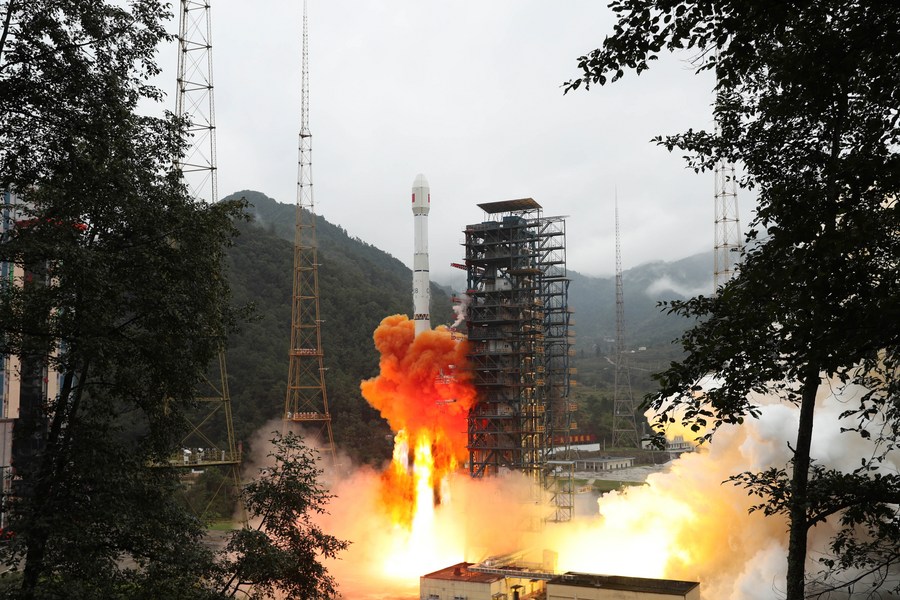
Next up, on October 24 at 01:27 UTC, a Chinese Long March 3B put the Shijian 21 satellite into geostationary transfer orbit from the Xichang Satellite Launch Center in south-central China.
The first satellite in the Shijian series was launched in 1971. Over the years, this series of satellites have varied widely to test new technologies for China. Shijian 21’s stated purpose is to “test and verify space debris mitigation technologies”, though the Chinese government did not elaborate on exactly how the satellite will perform this mission.
Space debris is generally a big problem for the future utilization of the space around Earth, particularly around the geostationary orbit. There is a narrow strip of altitude that satellites can be in the GEO belt and still get the advantages of rotating with the Earth. If you are more than a few tens of kilometers above or below that sweet spot, angular momentum will carry the satellite out of its assigned slot. This means a satellite can only maintain its orbit outside of the sweet spot for a few orbits unless it uses a lot of fuel for staying in place, which reduces the amount of time it can do its mission.
Humanity has been sending satellites into geostationary orbit for nearly sixty years, and a lot of the early satellites had no propulsion upon reaching final orbit. Back in those days, there were fewer satellites, and the year or two it took for the pull of the Sun and Moon to take them out to the graveyard was plenty fast enough. Fast forward to today, and the belt is packed with satellites every 200 or so kilometers. A satellite slowly being pulled out to the graveyard orbit by the Sun and Moon’s gravity will cause chaos in this environment, so any attempt to clean up geostationary orbit is worthwhile.
Companies and governments have been concerned about space debris since the 1980s, but only now has the technology advanced enough to do something about it. Previous methods were limited to mandates about deorbiting satellites at the end of life, if possible, or at least lowering their orbit enough so the atmosphere would cause them to reenter in a shorter period of time. Another policy was ensuring that rocket stages had no propellant or battery chemistry in them after they were done with the mission if they couldn’t be deorbited so that they wouldn’t explode in orbit and make more space debris.

Later on October 23 at 02:30 UTC, an Ariane 5 ECA successfully launched the SES 17 and Syracuse 4A satellites into subsynchronous geostationary transfer orbit from pad ELA-3 at the Guiana Space Center in Kourou, French Guiana.
This particular Ariane 5 launch was a bit different than your standard Ariane 5 launch. This launch carried more mass into orbit than any previous Ariane 5 launch – a whopping 11,210 kilograms. Both SES-17 and Syracuse 4A are massive satellites, having a combined mass of 10,263 kilograms. (The remaining 947 kilograms is the dual launch adapter and other components such as the separation mechanisms.) To accommodate this bigger payload, the standard Ariane 5 fairing was swapped out for one that was exactly 1.5 meters longer.
As satellites launched on Ariane 5 go, SES-17 and Syracuse 4A are pretty pedestrian. SES-17 will provide maritime and aviation communications over the Atlantic Ocean and the Americas. It will do this with the first fully digital payload on an SES satellite, which will allow it to dynamically change coverage from area to area depending on demand.
Syracuse 4A was built for the French military and will allow the nation to communicate securely (and jam-free!) with its armed forces around the world, including moving aircraft, ships, and ground vehicles. It is the first of three satellites in a new constellation of French military communications satellites.
This was the last launch of Ariane 5 before it will be entrusted to send NASA’s James Webb Space Telescope towards Sun-Earth Lagrange Point 2, beginning its “six months of terror”. Once the space telescope reaches its destination, it will begin the process of unfurling the spacecraft’s sunshade with its hundreds of single-point failure components and unfolding the massive honeycomb mirror — all before calibrating its instruments prior to its first light.
The ESA signed on back in 2007 to provide an instrument on the spacecraft and the launch of the telescope at no cost to NASA in exchange for 15% of all observation time and fifteen astronomers on the science support staff. With the success of this flight, some of the pressure is off of the initial half-hour of JWST’s flight.

And for our last launch of the week, on October 25 at 02:00 UTC, a Japanese H-IIA 202 launched the Quasi-Zenith Satellite-1R satellite into inclined geosynchronous transfer orbit from the Tanegashima Space Center in southern Japan.
QZS is Japan’s regional satellite navigation constellation designed to provide more precise positioning signals over the region — particularly in Japan’s mountainous areas, which includes the areas in between tall buildings in cities that act as artificial valleys. It seamlessly integrates with the U.S. military’s Global Positioning System by broadcasting compatible signals. QZS also provides the Japanese government with a backup satellite navigation system if GPS were to become unavailable for some reason. QZS-1 was launched eleven years ago and is past its design lifespan. QZS-1R will replace it in the four-satellite constellation.
The H-II is Japan’s medium satellite launch vehicle, the 202 variant of which is capable of putting 4100kg into geostationary transfer orbit. The 204 version with four solid boosters improves this to six metric tons to geostationary transfer orbit.
This Week in Rocket History
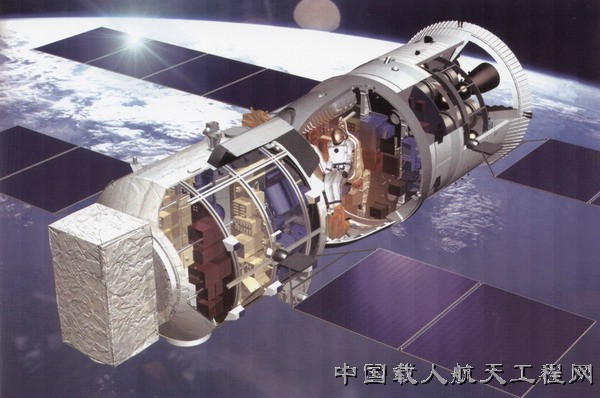
This week in rocket history is Shenzhou 5, China’s first crewed spaceflight.
In the late 1980s, China, after having successfully launched many satellites, debated the best way to make and launch a crewed spacecraft. Scientists and engineers considered everything from crewed capsules to more complex reusable shuttles for their first crewed craft. A shuttle would bring prestige to China by impressing the world. On the other hand, a capsule would be easier to build and more robust.
After years of back and forth, the simpler capsule design was chosen. In 1992, Project 921 was approved to build a small three-module capsule. After a series of uncrewed test launches, the goal was to have the first crewed launch in 2002. The Russian space program’s path to crewed flight was similar. The two countries actually collaborated heavily, including several exchanges of personnel and component purchases over the course of development. Unsurprisingly, the Shenzhou ended up looking pretty similar to the Soyuz — but with several improvements befitting the thirty-odd years of technology between the first Soyuz spacecraft and Shenzhou.
There is one major difference between the two spacecraft: the docking port. The Soyuz docking port, the SSVP, hasn’t changed much since the 1960s. The Shenzhou, on the other hand, uses a port derived from the Autonomous Peripheral Attachment System, also known as APAS-95. APAS-95 was itself slightly modified from the port developed for the Soviet Buran space shuttle orbiter.
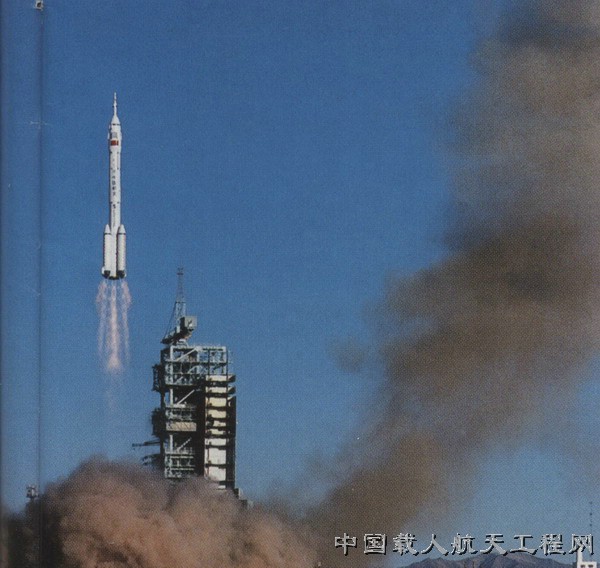
Seven years after the approval of Project 921, the first uncrewed Shenzhou test flight occurred in 1999. This first flight was mainly to test the new Long March 2F rocket, the first human-rated Chinese rocket. The first real spacecraft was behind schedule, so in its place, one of the Shenzhou ground test articles was outfitted for spaceflight. The capsule successfully landed after a few orbits.
The second uncrewed test flight happened a couple of years later in 2001. Shenzhou 2 carried a monkey, a dog, and a rabbit to orbit to test the capsule’s life support system. All animals survived the flight.
Both Shenzhou 3 and 4 were launched in 2002. Shenzhou 3 was the first to have a working launch escape system. Shenzhou 4 was the final uncrewed test flight of the Shenzhou. Yang Liwei, the first Chinese astronaut, even boarded this capsule prior to launch but departed before liftoff.
Finally, after years of planning and testing, it was time for Shenzhou 5 to become the first crewed mission of the Chinese space program. In August 2003, the Long March 2F rocket for the flight arrived at the Jiuquan Satellite Launch Site.
The months and weeks leading up to the mission were full of confusion. All Chinese astronauts, fifteen at that time, were sent to the launch site in the months before launch. It was initially reported in August 2003 that the flight would carry three crew members and the mission would last a week. The official announcement, however, was finally made one week before liftoff. Shenzhou 5 would only take one astronaut up for a single day. Yang Liwei was selected from a final group of three to be the first Chinese astronaut to go to space. Two hours and forty-five minutes before launch, he boarded the spacecraft.
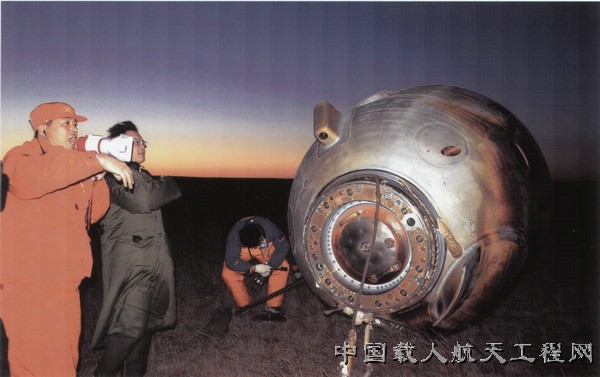
Shenzhou 5 launched from the Jiuquan Satellite Launch Center on October 15, 2003, at 01:00 UTC. Five hundred and eighty-seven seconds later, China made history as the third country to put a person in space, after Russia and the United States. The ascent was fine, though Yang did report violent shaking from the rocket during the second stage burn. The Long March 2F was modified to prevent this from occurring on future flights. Shenzhou 5 achieved a 199-by-347-kilometer orbit.
Yang remained in the descent module for the entire 21-hour mission. The spacecraft was entirely controlled from the ground, but Yang could manually command the solar panels to open if the automatic system failed. Other than taking part in lots of television broadcasts, Yang did not do much other than eat meals and nap in the capsule. To emphasize the peaceful nature of the mission, Yang waved both a Chinese and United Nations flag during one of the broadcasts.
After almost 22 hours in space, Yang landed safely in Inner Mongolia. After a brief medical examination, he was sent to Beijing. The orbital module of Shenzhou 5 remained in orbit and spent six months performing a military reconnaissance mission with a series of cameras.
Statistics
To wrap things up, here’s a running tally of a few spaceflight statistics for the current year:
Toilets currently in space: 8: 4 installed on ISS, 1 on the Crew Dragon, 1 on the Soyuz, 1 on the Shenzhou, and 1 on Tianhe.
Total 2021 orbital launch attempts: 104, including 9 failures
Total satellites from launches: 1512
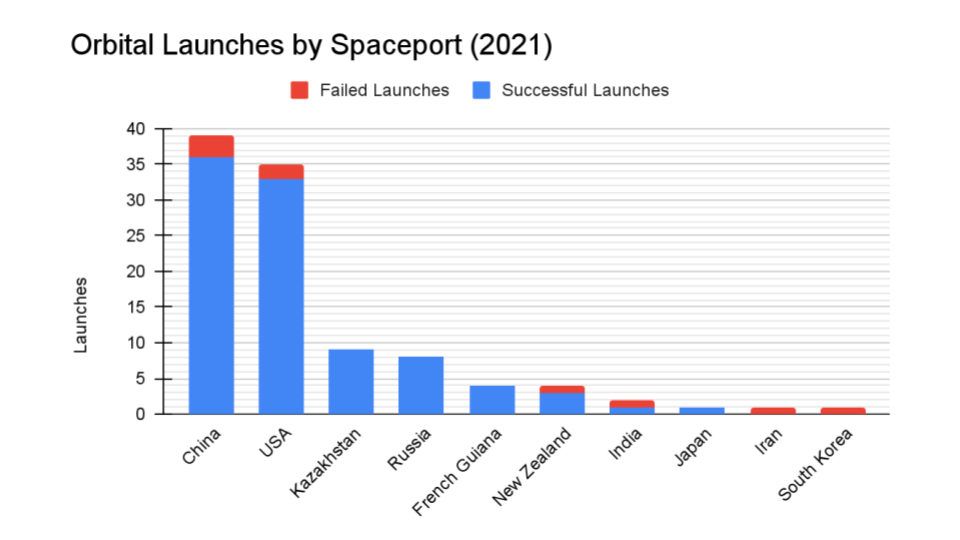
We keep track of orbital launches by where they launched from, also known as spaceport. Here’s that breakdown:
China: 39
USA: 36
Kazakhstan: 9
Russia: 8
French Guinea: 4
New Zealand: 4
India: 2
Japan: 1
Iran: 1
South Korea: 1
Your random space fact comes to us from Jon Kelvey at Inverse.com. Seventy-five years ago, the first photo of Earth was taken from space. In 1946, a 35-mm film camera was launched on a captured German V-2 rocket, #13, from White Sands Missile Range in New Mexico. Parachutes for payloads had not yet been developed, so the camera was put into an armored box, and everyone just hoped it survived re-entry.
This has been the Daily Space.
You can find more information on all our stories, including images, at DailySpace.org. As always, we’re here thanks to the donations of people like you. If you like our content, please consider joining our Patreon at Patreon.com/CosmoQuestX.
Credits
Hosts: Annie Wilson and Beth Johnson
Writers: Gordon Dewis, Pamela Gay, Erik Madaus, and Annie Wilson
Audio and Video Editing: Ally Pelphrey
Content Editing: Beth Johnson
Executive Producer: Pamela Gay
Intro and Outro music by Kevin MacLeod, https://incompetech.com/music/


 We record most shows live, on Twitch. Follow us today to get alerts when we go live.
We record most shows live, on Twitch. Follow us today to get alerts when we go live.